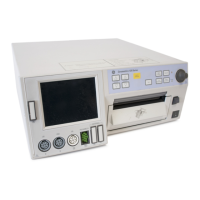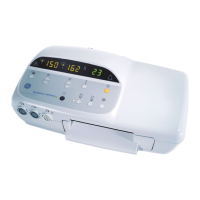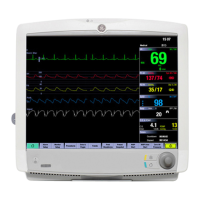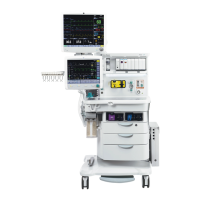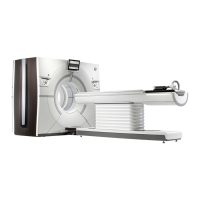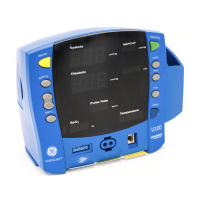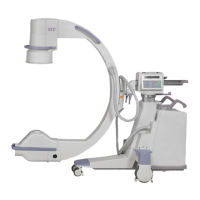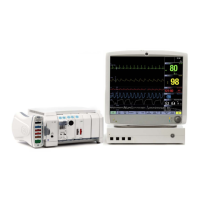Revision D 250 Series Maternal/Fetal Monitor 1-7
2020551-001
Introduction: Safety Information
WARNINGS
LINE ISOLATION MONITOR TRANSIENTS—Line isolation
monitor transients may resemble actual cardiac waveforms, and
thus cause incorrect heart rate determinations and alarm activation
(or inhibition).
MRI USE—Do not use the electrodes during MRI scanning;
conducted current could potentially cause burns.
PATIENT CABLES AND LEADWIRES—Do not use patient
cables and electrode leads that permit direct connection to
electrical sources. Use only “safety” cables and leadwires. Use of
non-safety patient cables and leadwires creates risk of
inappropriate electrical connection which may cause patient shock
or death.
PACEMAKER PATIENTS—Rate meters may continue to count
the pacemaker rate during occurrences of cardiac arrest or some
arrhythmias. Do not rely entirely upon rate meter alarms. Keep
pacemaker patients under close surveillance. Refer to “Appendix
A, Technical Specifications” for disclosure of the pacemaker pulse
rejection capability of the 250 Series Monitor.
RF INTERFACE—Known RF sources, such as cell phones, radio
or TV stations, and two-way radios, may cause unexpected or
adverse operation of this device.
SIMULTANEOUS DEVICES—Do not simultaneously connect
more than one device that uses electrodes to detect ECG and/or
respiration to the same patient. Use of more than one device in this
manner may cause improper operation of one or more of the
devices.
STRANGULATION—Make sure all patient cables, leadwires, and
tubing are positioned away from the patient’s head to minimize the
risk of accidental strangulation.
WATER BIRTHS—Do not use the monitor to directly monitor
patients during water births, in whirlpool or submersion water
baths, during showers, or in any other situation where the mother
is immersed in water. Doing so may result in electrical shock
hazard.
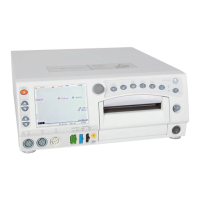
